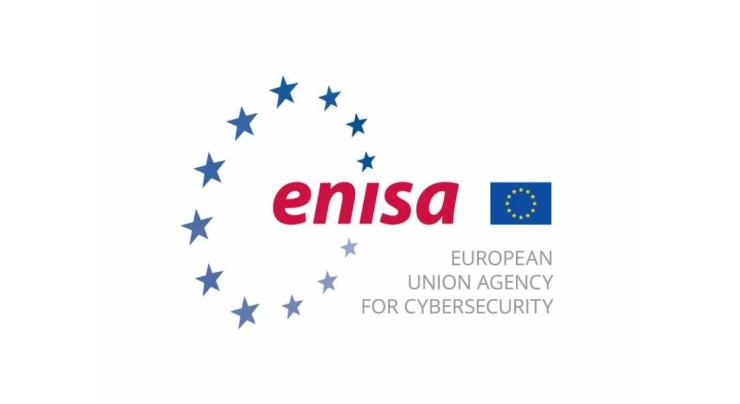
EU Consistently Targeted By Diverse Yet Convergent Threat Groups, ENISA Warns
Muhammad Irfan Published October 01, 2025 | 02:00 PM

BRUSSELS, (UrduPoint / Pakistan Point News / WAM - 01st Oct, 2025) The European Union Agency for Cybersecurity (ENISA) warned that cyber-threat groups are reusing tools and techniques, introducing new attack models, exploiting vulnerabilities and collaborating to target the security and resilience of the EU’s digital infrastructure.
In its annual report “Threat Landscape”, ENISA analysed 4,875 incidents over a period spanning from 1st July 2024 to 30th June 2025. At its core, this report provided an overview of the most prominent cybersecurity threats and trends the EU faces in the current cyber threat ecosystem.
ENISA Executive Director Juhan Lepassaar stated, “Systems and services that we rely on in our daily lives are intertwined, so a disruption on one end can have a ripple effect across the supply chain. This is connected to a surge in abuse of cyber dependencies by threat actors that can amplify the impact of cyberattacks."
He added that the ENISA Threat Landscape provides valuable insights to enable informed decision-making and prioritisation to safeguard critical infrastructure and ensure that the digital future is secure.
The report showed that DDoS attacks was the dominant incident type and accounted for 77 percent of reported incidents, the greater part of which were deployed by hacktivists, while cybercriminals represent only a minor portion.
Ransomware is identified as the most impactful threat in the EU.
Hacktivism took the lead, representing almost 80 percent of the total number of incidents, primarily through low-impact DDoS campaigns targeting EU Member States organisations’ websites, with only 2 percent of hacktivism incidents resulting in service disruption.
State-aligned threat groups steadily intensified their operations towards EU organisations. State-nexus actors carried out cyberespionage against the public administration sector, while EU audiences were faced with Foreign Information Manipulation and Interference (FIMI).
Phishing (60 percent), followed by vulnerability exploitation (21.3 percent) are the two leading intrusion access points.
Based on the updated ENISA Cybersecurity Threat Landscape Methodology and a new format, the findings include updated key trends.
Phishing remains the leading method of intrusion, responsible for about 60% of cases, with new models such as Phishing-as-a-Service making attacks easier and more automated.
At the same time, cybercriminals are increasingly exploiting digital dependencies, particularly in supply chains, to amplify the impact of their actions across Europe’s interconnected systems.
Another notable trend is the convergence of threat actors, as state-aligned groups, hacktivists and cybercriminals increasingly share tactics, tools and objectives. This is illustrated by “faketivism,” where state-aligned actors employ hacktivist characteristics, as well as with similarities in tools utilised by both hacktivists’ groups and cybercriminals.
The growing role of AI has become an undeniable key trend of the rapidly evolving threat landscape. The report highlighted AI use both as an optimisation tool for malicious activities but also as a new point of exposure. Large Language Models (LLMs) are being used to enhance phishing and automate social engineering activities.
By early 2025, AI-supported phishing campaigns reportedly represented more than 80 percent of observed social engineering activity worldwide.
Attacks on the AI supply chain are on the rise. While the focus of threat activities involving AI was the use of consumer-grade AI tools to enhance their existing operations, the emergent malicious AI systems is raising concerns about their capabilities in the future due to the widespread use of AI models.
Last but not least, a higher volume of attacks toward mobile devices has been noted, with a focus on compromising outdated devices.
The report also highlighted the top targeted sectors in the EU. The first is public administration (38.2 percent), being the focus of hacktivism and state-nexus intrusion sets conducting cyberespionage campaigns on diplomatic and governmental entities.
At second place is the transport sector (7.5 percent), followed by digital infrastructure and services (4.8 percent), finance (4.5 percent) and manufacturing (2.9 percent).
The close match between the sectors with the highest ranking and the sectors under scope for the NIS2 Directive underscores the importance of the Directive. 53.7 percent of the total number of incidents concern essential entities, as defined by the NIS 2 Directive.
Three of the top-five targeted sectors have consistently stayed in the top ranks for two consecutive years, whereas public administration has seen a notable rise in incidents this year, driven by the increased hacktivists’ DDoS attacks.
Related Topics
Recent Stories

KP govt distributes plots to police martyrs’ families

Eight held in Rawalpindi for drugs, liquor & arms

72 professional beggars rounded up in Rawalpindi

ALEC Holdings prices its IPO at top end of price range, raising AED1.4 billion

China’s 76th National Day celebrated with enthusiasm

Rawalpindi Police arrest 5 POs in separate operations

Cultural Advisor visits Rung School of Music & Arts, assures govt's support for ..

Clemency was granted of Abdul Basit after PM recommendations

Over 1,000 dead, 275 children lost lives in flood-hit regions: NDMA

PFA discards over 230kg unsafe snacks, 50 kg packing material, other items in Bu ..

CM felicitates China on 76th National Day

NITB, LJCP joined hands to digitally transforms judiciary
More Stories From Middle East
-
Saeed Al Hajeri underscores UAE commitment to stability, economic growth at BRICS Foreign Ministers� ..
17 minutes ago -
UAE President, Iraqi Prime Minister discuss bilateral ties, regional developments
17 minutes ago -
ECI highlights its role as catalyst in enhancing trade, investment opportunities between UAE and Afr ..
32 minutes ago -
Passenger demand grows 4.6% in August: IATA
47 minutes ago -
Abu Dhabi to host ADIPEC 2025 on November 3
1 hour ago -
Saud bin Saqr witnesses launch of autonomous bus trial in Ras Al Khaimah
1 hour ago
-
Theyab bin Mohamed bin Zayed attends ACTVET 2025 graduation ceremony for top achievers
2 hours ago -

ALEC Holdings prices its IPO at top end of price range, raising AED1.4 billion
2 hours ago -
Emirates Energy Award reflects green economy commitment: Dubai Supreme Council of Energy
2 hours ago -

Othman claims bronze for UAE at World Para Athletics Championships
2 hours ago -

UAE condemns terrorist attack in Pakistan
2 hours ago -

WETEX 2025 promotes competitiveness of eco-friendly vehicles
2 hours ago



